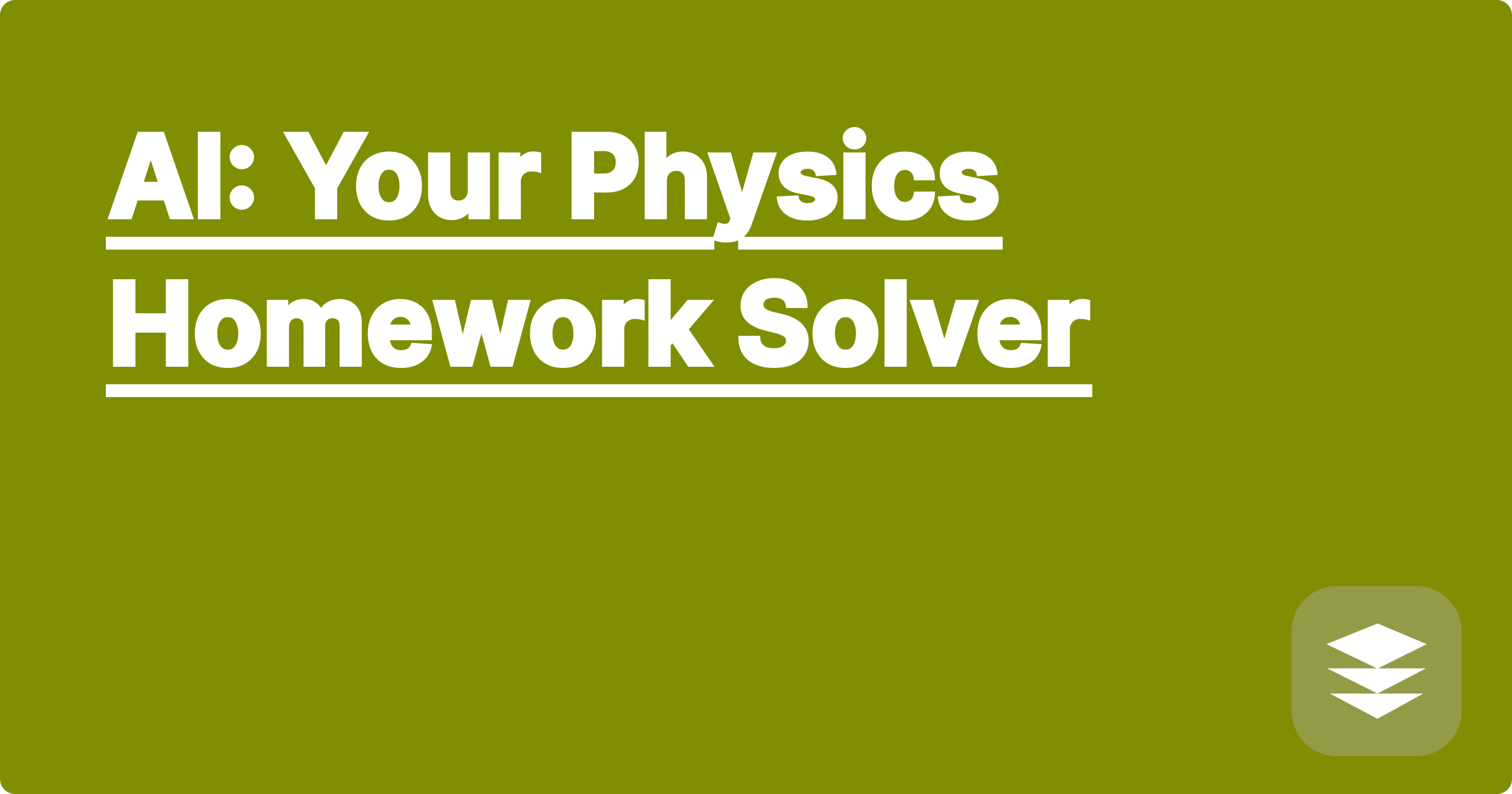
The world of STEM education and research often presents complex challenges, particularly in fields like physics. Grappling with intricate theories, equations, and problem-solving can be daunting. Artificial intelligence (AI) is emerging as a powerful tool to assist students and researchers in navigating these complexities, offering new avenues for understanding and problem-solving in physics. AI can provide support ranging from clarifying fundamental concepts to assisting with complex calculations and even generating creative solutions.
This new paradigm matters significantly for STEM students and researchers. AI can personalize learning experiences, providing tailored support to individual learning styles and pacing. For researchers, AI can automate tedious tasks, analyze vast datasets, and offer novel insights, accelerating the pace of scientific discovery. Embracing these tools can empower the next generation of STEM professionals to excel in their fields and contribute meaningfully to scientific advancement.
Physics, at its core, is about understanding the fundamental laws governing the universe. This involves grappling with concepts like motion, forces, energy, and fields. Students often encounter difficulties translating abstract theoretical concepts into practical problem-solving skills. Furthermore, the mathematical rigor required in physics can be a significant hurdle. Solving complex equations, understanding vector calculus, and applying differential equations often pose challenges. Research in physics presents its own set of complexities. Analyzing large datasets from experiments, simulating complex physical systems, and developing new theoretical models require significant computational power and expertise.
AI tools such as ChatGPT, Claude, and Wolfram Alpha offer powerful capabilities for tackling physics problems. ChatGPT and Claude excel at explaining complex concepts in natural language, providing step-by-step solutions, and even generating code for simulations. Wolfram Alpha, with its vast knowledge base and computational engine, is adept at solving equations, visualizing functions, and providing detailed information on physical constants and properties. These tools, when used strategically, can be invaluable assets for both students and researchers.
Let's consider a scenario where a student is struggling with a projectile motion problem. They can begin by clearly articulating the problem to an AI tool like ChatGPT. This might involve describing the initial conditions, such as the initial velocity and angle of projection, and stating the desired outcome, such as calculating the maximum height or range. The AI can then provide a step-by-step solution, explaining the relevant equations and demonstrating how to apply them to the specific problem. Furthermore, the AI can offer visualizations of the projectile's trajectory, helping the student develop a deeper intuitive understanding of the problem.
Consider the problem of calculating the trajectory of a projectile launched at an angle θ with an initial velocity v₀. Using AI tools, we can input the relevant equations of motion: x = v₀cos(θ)t and y = v₀sin(θ)t - (1/2)gt². We can then specify values for v₀, θ, and g (acceleration due to gravity). The AI can then generate a plot of the trajectory, showing the projectile's path in two dimensions. Furthermore, it can calculate specific parameters such as the maximum height reached (h = (v₀sin(θ))²/2g) and the range (R = (v₀²sin(2θ))/g). This demonstrates how AI can provide not only numerical solutions but also valuable visualizations and insights. Another example involves using AI to understand complex concepts like quantum mechanics. By querying an AI about the Schrödinger equation, students can receive explanations, examples, and even interactive simulations, making abstract concepts more accessible.
To effectively leverage AI in STEM education and research, it's crucial to develop a discerning approach. AI should be used as a tool to enhance understanding, not as a replacement for critical thinking. Students should focus on understanding the underlying principles and reasoning behind the solutions provided by AI, rather than simply copying answers. Researchers can use AI to automate tedious tasks, but they should always critically evaluate the results and ensure they align with established scientific principles. Furthermore, it is essential to cite AI tools appropriately in academic work, acknowledging their contribution to the research process.
In conclusion, AI offers transformative potential for STEM education and research, particularly in physics. By providing personalized learning experiences, automating complex tasks, and offering novel insights, AI can empower students and researchers to achieve new levels of understanding and innovation. Embracing these tools responsibly and strategically will be crucial for success in the rapidly evolving landscape of STEM. Start exploring these AI tools today, experiment with different approaches, and discover how they can enhance your learning and research journey. Remember to prioritize understanding the fundamental concepts and use AI as a tool to augment, not replace, your own critical thinking and problem-solving skills.
AI Homework Help: STEM Made Easy
Ace STEM Exams: AI Study Guide
AI for Lab Reports: Data Analysis
AI: Your Physics Homework Solver
Engineering AI: Boost Your GPA